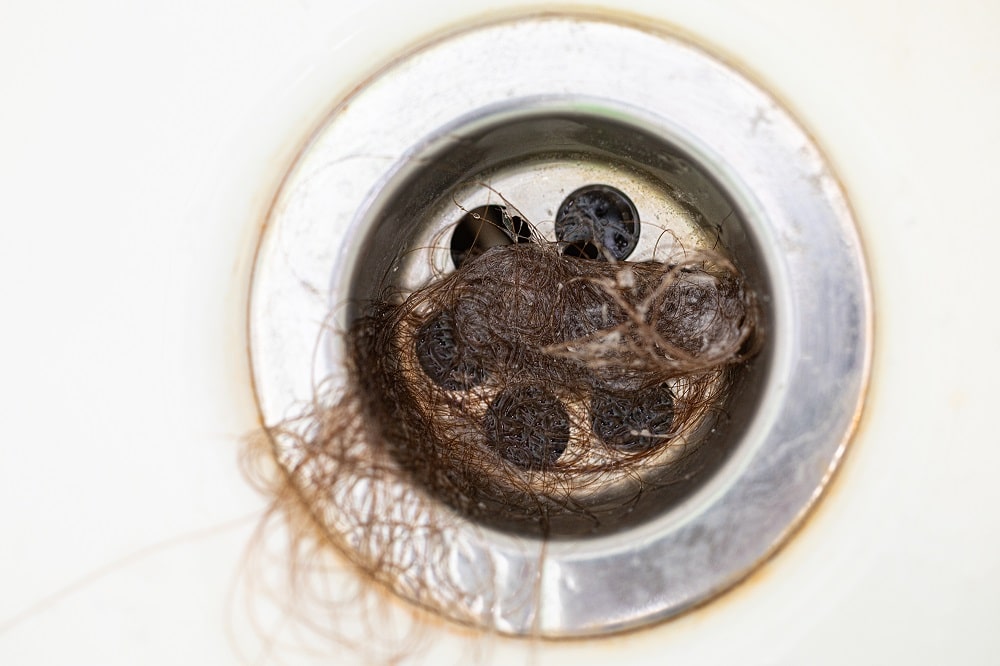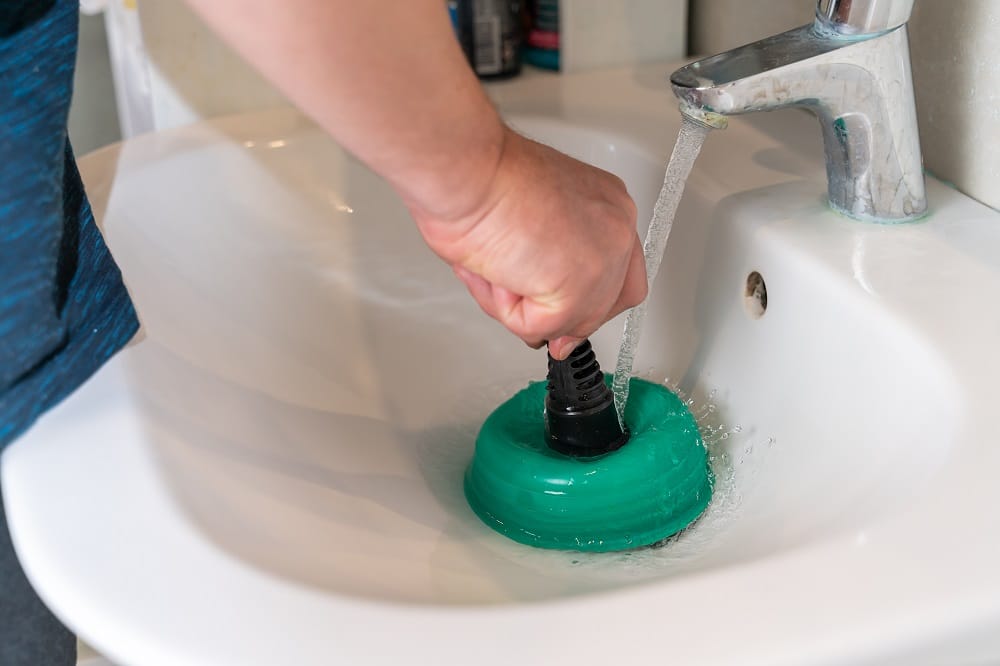7 DIY Drain Cleaning Hacks to Save Money
-
tomsplumbing
-
0 Comment
Table of Contents
- Key Takeaways
- Why Do Drains Clog?
- 7 DIY Drain Cleaning Techniques That Actually Work
- A Better Way to Handle Household Clogs
You don’t have to spend a fortune to keep your drains flowing smoothly. With a few simple, effective tricks using everyday items you probably already have at home, you can clear minor clogs and prevent bigger plumbing issues before they arise.
At Tom’s Plumbing and Drain Service, LLC, we believe in giving homeowners the tools and knowledge to prevent common plumbing issues. But if you ever need help, we’re just a call away. Contact us today for expert plumbing assistance.
Key Takeaways
- Clogs typically build over time due to hair, soap scum, food scraps, grease, and mineral buildup from hard water. Understanding these causes helps you prevent future blockages.
- There are simple and effective ways to clear drains using everyday household items like baking soda, vinegar, dish soap, and boiling water. These techniques help avoid costly plumbing repairs.
- Everyday tools like a plunger, drain snake, or wet/dry vacuum can make a significant difference in maintaining clean and functional drains.
- If DIY methods don’t work, or you prefer professional assistance, Tom’s Plumbing and Drain Service is ready to help clear any tough clogs and keep your plumbing in top condition.
Why Do Drains Clog?
Clogs don’t appear suddenly. They typically build up gradually over time. Understanding the root causes of these blockages will help you avoid them and deal with them before they become major issues.
1. Hair and Soap Scum

2. Food Scraps and Grease
In kitchen sinks, food scraps, cooking oil, and grease are the leading causes of clogs. Grease, oils, and fats are particularly problematic because, as they cool down, they solidify and coat the interior of the pipes. Over time, this buildup traps food particles like rice, pasta, coffee grounds, and eggshells, leading to blockages.
3. Mineral Buildup from Hard Water
Hard water is water that contains high levels of minerals like calcium and magnesium. Over time, these minerals can build up inside your pipes, reducing water flow and eventually causing blockages. The accumulation of mineral deposits can also cause scale buildup on fixtures and appliances, leading to reduced efficiency.
7 DIY Drain Cleaning Techniques That Actually Work
Now that we’ve covered the causes, here are seven proven DIY methods to clear clogged drains using items you likely already have at home. These methods are safe for most plumbing systems and will save you money on plumbing services.
1. Boiling Water and Dish Soap Flush
This technique works well for grease and minor debris buildup, especially in kitchen sinks.
- Boil 1 gallon of water.
- Add 1 tablespoon of dish soap (preferably one with grease-cutting power).
- Slowly pour the mixture down the drain in stages, allowing it to work through the clog.
- Repeat weekly to prevent grease and debris buildup.
Boiling water combined with dish soap helps dissolve grease and flush out minor food particles before they solidify and cause a blockage.
2. Baking Soda and Vinegar Reaction
This is a natural, non-toxic way to break up stubborn gunk and help deodorize your drains.
- Pour ½ cup of baking soda down the drain.
- Follow with ½ cup of white vinegar.
- Let the fizzing reaction sit for 15 to 30 minutes.
- Rinse with hot water to flush the loosened debris.
This method is effective in kitchen sinks, bathtubs, and shower drains. The reaction between baking soda and vinegar helps break down grease, soap scum, and light food debris.
3. Plunging Power
A plunger is one of the simplest and most effective tools for clearing clogged drains, especially in sinks and tubs.
Use a cup plunger that fits the size and shape of the drain.
- Make sure there’s enough water in the sink or tub to cover the plunger.
- Create a firm seal and pump vigorously up and down for 30 seconds.
- Quickly lift the plunger to break the clog loose.
Pro tip: Keep a separate plunger for the kitchen and bathroom to prevent cross-contamination.
4. Drain Snake or Zip Tool
A drain snake (or zip tool) is a great tool for clearing hair clogs or debris stuck deep within the pipes.
- Insert the tool into the drain slowly, twisting or pushing it in until you feel resistance.
- Once you’ve hooked the clog, pull it out to remove the obstruction.
You can find plastic zip tools at most hardware stores, and they’re affordable for most homeowners. This is one of the most reliable ways to clear hair and other stubborn debris.
5. Salt and Baking Soda Mix
This combination of ingredients works as a mild abrasive that scrubs away buildup inside the pipe.
- Mix ½ cup of baking soda with ½ cup of table salt.
- Pour the dry mixture into the drain.
- Leave it overnight if possible.
- Flush with hot water the next morning.
This method is a good alternative when vinegar and baking soda don’t fully clear the drain.
6. Wet/Dry Vacuum Trick
If you have a wet/dry vacuum, you can use it to remove debris deeper in your pipes.
- Switch your vacuum to liquid mode.
- Seal the hose around the drain opening.
- Turn the vacuum on high for 15 to 30 seconds.
- Check the canister to see what has been sucked out.
This is an effective way to remove debris from deep inside pipes that might not be accessible with other methods.
7. Homemade Hydro Jet with a Hose
Hydro jetting is a professional technique that uses high-pressure water to clear clogs. You can create a similar effect with a garden hose.
Attach a spray nozzle to your garden hose.
- Carefully feed the hose into the drain.
- Turn the water on full blast for a few seconds at a time.
- Move the hose around to help break up stubborn debris.
This technique works best for outdoor drains or garage floor drains, but avoid using it on older or more fragile plumbing systems.
A Better Way to Handle Household Clogs
These seven DIY drain cleaning techniques are effective, simple, and don’t require expensive chemicals. They help you maintain your plumbing without having to spend a lot of money on professional services. The best part? You likely already have most of the materials you need at home.
A little soap, grease, or food debris can accumulate over time and cause clogs. By using these DIY methods regularly, whether once a month or whenever you notice slow drainage, you can prevent costly plumbing repairs before they start.
If you run into a stubborn clog or prefer expert help, Tom’s Plumbing and Drain Service, LLC is ready to assist.
Call us today for fast, professional plumbing service!



 Use a cup plunger that fits the size and shape of the drain.
Use a cup plunger that fits the size and shape of the drain. Attach a spray nozzle to your garden hose.
Attach a spray nozzle to your garden hose.